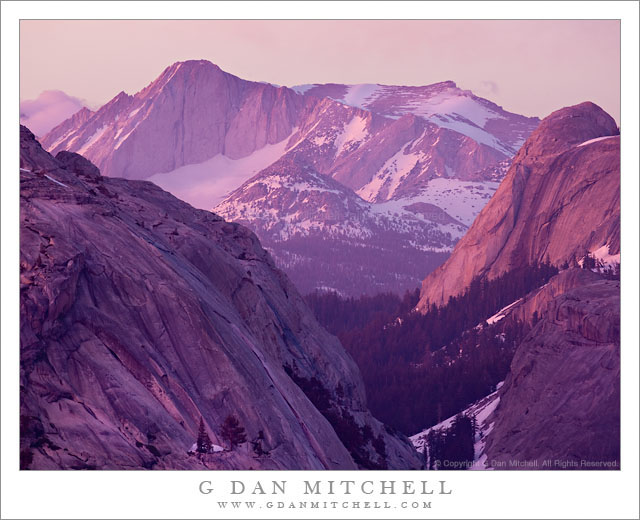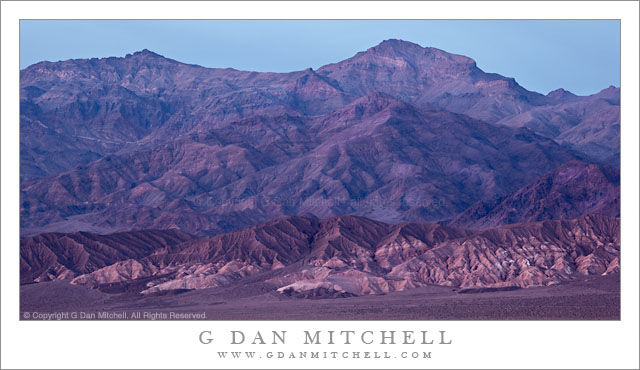Fog, Surf, and Rocks. Point Lobos State Reserve, California. March 29, 2012. © Copyright 2012 G Dan Mitchell – all rights reserved.
Midday sun glows through coastal fog bank above offshore rocks and surf, Point Lobos State Reserve.
I made a new photograph in the “barely there” series today at Point Lobos. It was a surprisingly good photography day at Point Lobos. I say this because when I started out this morning things did not look very promising at all. At my home, it was cloudy and gray – but since at least one weather forecast mentioned sun down in the Monterey Peninsula area, I decided to give it a try. As I drove south it got worse – I ended up in very thick fog during the first 30 minutes or so of my drive. However, recalling that when there is inland fog this time of year there is often clearing at the coast, I decided to keep going. A few miles from Monterey the skies began to clear, leaving some pockets of fog here and there with high thin clouds above. Now things were looking up! High, thin clouds can provide excellent conditions for many kinds of landscape shooting, since these conditions soften that shadows and take the harsh edge off of the light.
Arriving at Point Lobos I could see there was fog a good distance off shore, but beautiful light was shining through the forest along the entrance road. I headed down to Whalers Cove and went for a hike around the far side of the cove, and ended up spending the better part of three hours poking around in this area. By the time I got back to my car it was lunch time, and I decided to at least head out to the west-facing shoreline to look around before leaving. When I got there, the offshore fog bank had moved in and was starting to flow across the shoreline. A bit further south I could see the backlit fog lit brilliantly by the sun and almost obscuring the rocks and islands in the Bird Island area. In fact, by the time I got my camera on the tripod, these islands had completely disappeared. I waited a bit, and their shapes began to again barely emerge from the fog.
G Dan Mitchell is a California photographer whose subjects include the Pacific coast, redwood forests, central California oak/grasslands, the Sierra Nevada, California deserts, urban landscapes, night photography, and more.
Blog | About | Flickr | Twitter | Facebook | Google+ | 500px.com | LinkedIn | Email
Text, photographs, and other media are © Copyright G Dan Mitchell (or others when indicated) and are not in the public domain and may not be used on websites, blogs, or in other media without advance permission from G Dan Mitchell.




